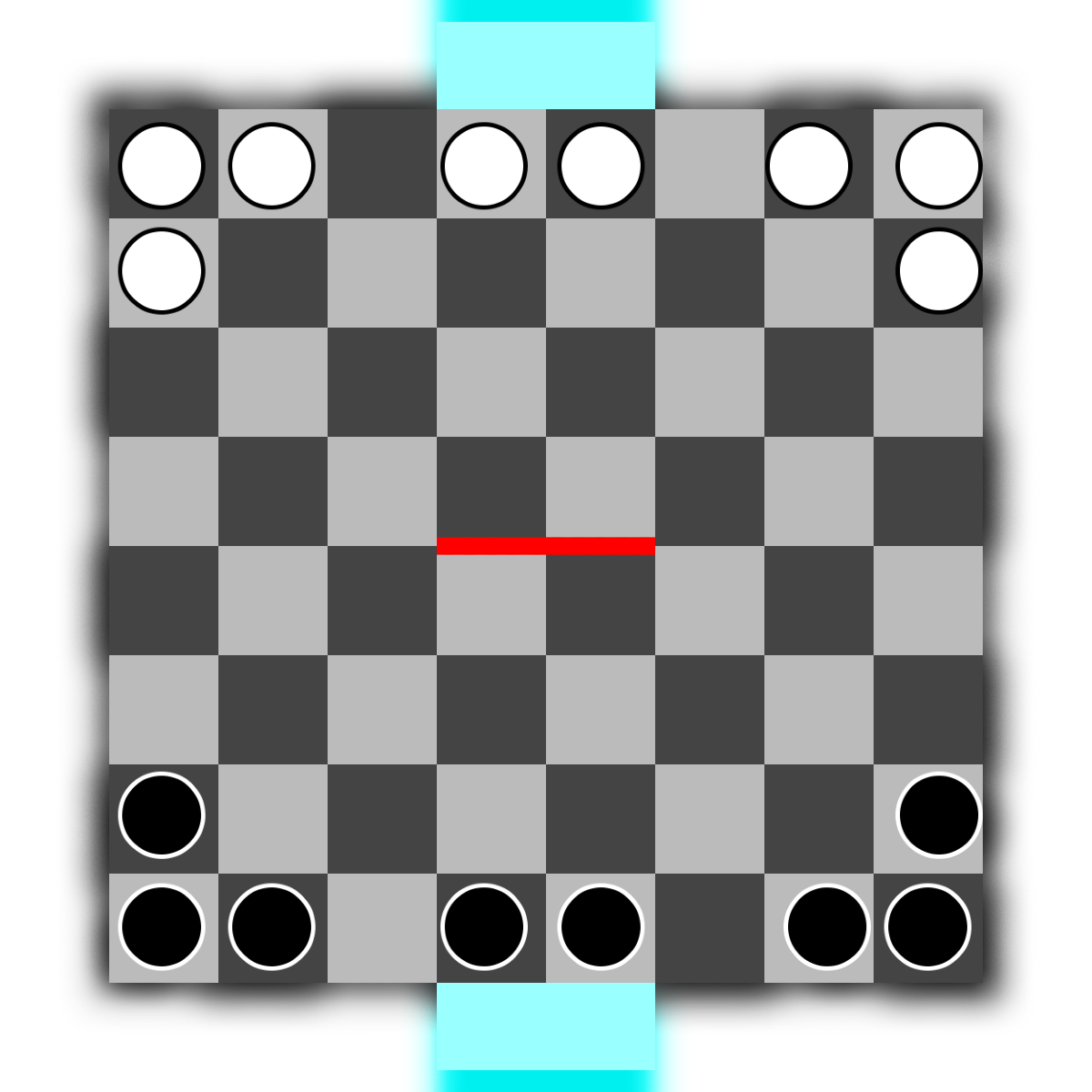tyo: a minimalist, adaptable game.
a game for people with no time (or too much)like all of my games, this one started with me sitting down and going "i should make a game". so i did. i started with a theme of minimalism. personally, i appreciate simple games that have tons of complexity and variance, for example go or chess, so that concept was the driving concept for the game. the main mechanic came from a puzzling.stackexchange post, namely this one.
if you don't want to open the link, the key mechanic in the post that really stuck with me was that you would move a piece in a cardinal direction, and it would go all the way in that direction. i played around with the concept for a bit, ultimately ending with a goal based game, where you would try to slide your pieces into the opposite goal.
as i was messing with mechanics, i ultimately came to three basic rules that dictated gameplay.
- Movement: When moving a piece, you choose a cardinal direction, and the piece moves all the way in that cardinal direction until it hits a wall or another piece
- Knocking: If your piece hits your opponents piece (does not apply if it hits your own), your own piece stops in place, and your opponents piece begins moving until it hits a wall or another piece. This can stack.
- Capture: If a piece is surrounded by three or more pieces of the opposite color (including diagonals), it gets captured and removed from the board.
okay cool, so up to this point, i've really been saying things. lets contextualize it! the original game i designed was played on a 15x15 board (post coming soon), and that version has it's own strategies and gameplay. i was recently on a trip with my friend anna, and i had decided to try playing it with them, adapting it to a chessboard. chessboards tend to be a lot more prevalent than tyo boards (there being one tyo board in existence at the moment), and so we adapted the rules to fit the board, using pawns as pieces. it works as so.

here's an amazing graphic of the board i created in like five minutes. the pieces (the white and black circles) are set up as one would in the beginning of the game. the blue rectangles on the top and bottom are the goals. the goals are outside the chessboard, but in 8x8 tyo are the middle two squares on either end, just outside the board. remember, to win, you need to get a piece off through the goal. the red line in the middle is a wall (you'll just have to imagine it exists on the chessboard lol). on the actual 15x15, there are more walls, and a lot more possibile plays.
anyways, now that you have the rules and set up, you can probably play the game. admittedly, i think its easier to learn the game with someone there, but it's super easy to pick up and can be learned fully within one or two games (source: like seven people i taught). it's also apparently really fun (source: like the same seven people). games on the 8x8 board go by really fast so you can do a lot.
let's talk about the small details that nobody cares about!!! that's the fun stuff.
notation
notation i also tried to keep as simplistic as possible, and so the way the notation functions is that the you select the piece and point the direction, as everything can be gleaned from that. I ultimately decided on a system similar to chess. Notation might look like: wA2↑. Breaking that down you get "w" (the white piece at "A2" (letters are left to right from the players view, numbers are from your side of the board to your opponents) moves up the board (toward your opponents. that's probably explanatory.
variations
one thing i really like about this game is how adaptible it is. you can throw in any mechanic you want to spice the game up after a while. a particularly interesting one i like is the "dragon" mechanic, or if you're funnier than me, the "gun" mechanic. on the 8x8 chessboard, it works by replacing two of the pawns for each player with a knight (or dragon, or gun). The piece has all the properties of a normal piece, but has two additional mechanics. One, you can spend one turn turning that piece to face a cardinal direction, and two, you can "fire". When you fire a gun, it gets sacrificed, but also clears everything in the rwo in front of it. If it hits another gun, that gun gets triggered.
'there are a lot of goofy mechanics that you can play around with and have fun.
anyways give it a shot, see what happens. enjoy!
back to top